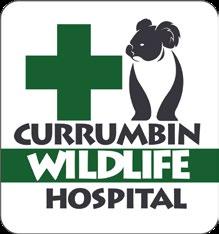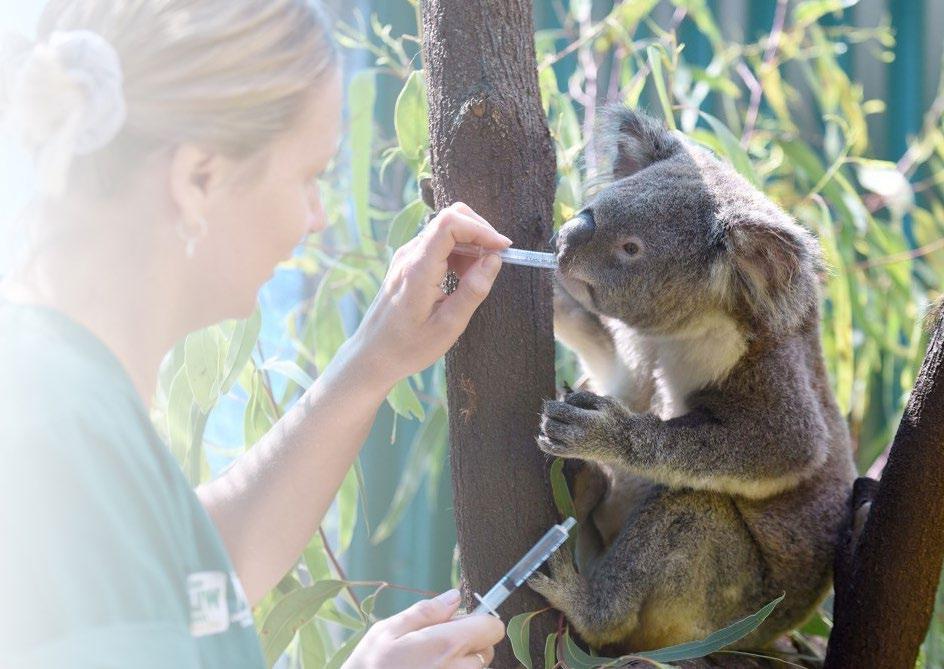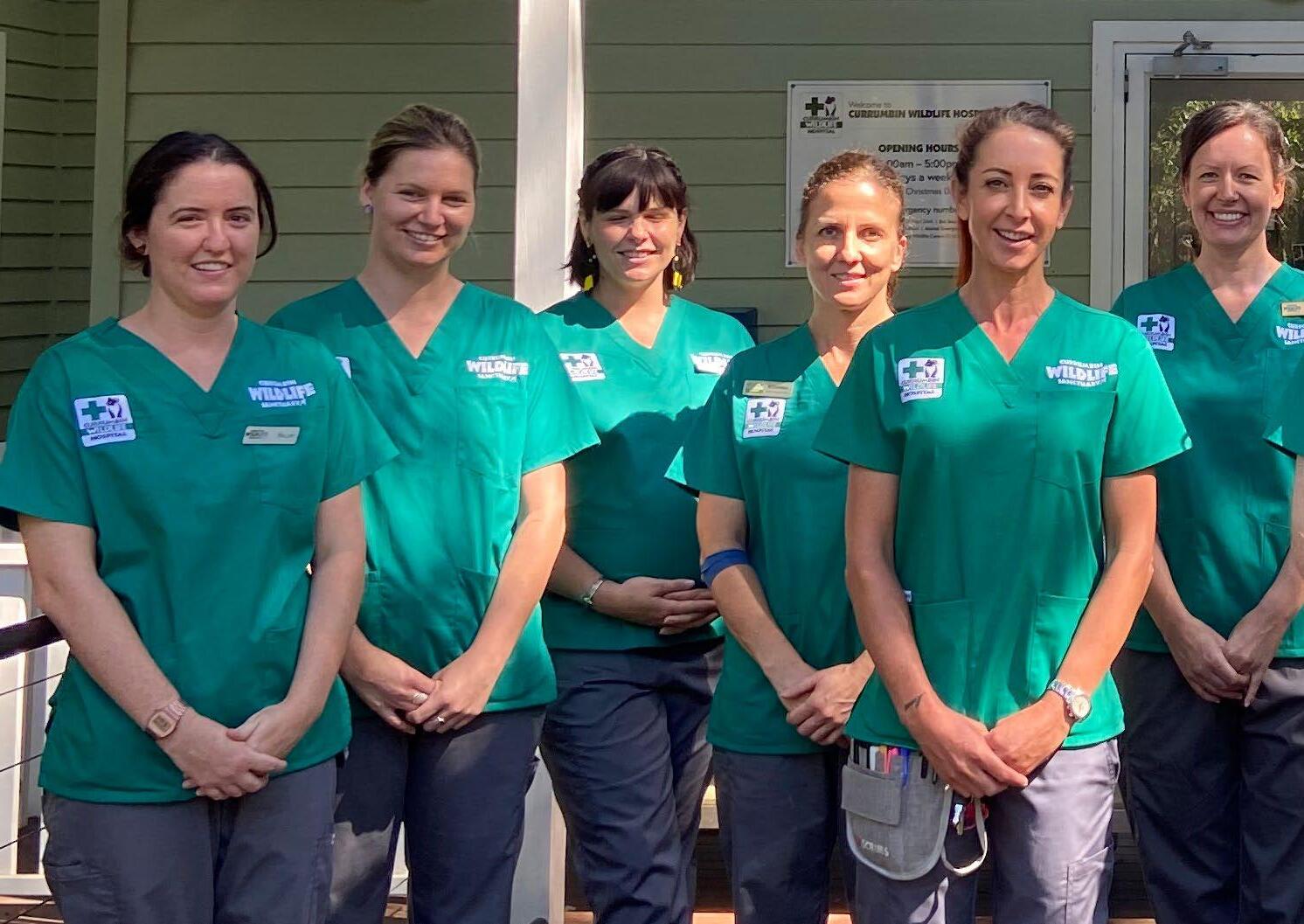





With your help we can save wildlife for the next generation - through scientific and applied research, collaboration and education.
Australia has 86 animal species that are considered critically endangered
Currumbin Wildlife Hospital (CWH) has seen a significant increase in patient admissions over the last 10 years, with an approximate 1,000 additional animals admitted each year on year. These numbers are simply not sustainable for both the physical hospital building, our team, and our wildlife.
For the first time ever, we have managed to reduce hospital admissions, albeit slightly, through scientific and applied research and by educating the community.
CWH needs to expand into critical research projects and deliver vital training programs to both our community and professionals around the world on how to protect our native wildlife. The current facilities do not provide the appropriate laboratories to further unlock the secrets of our native wildlife.
Today, we need your help to ensure Dr Pyne and the CWH team continue its life-saving work for our native Australian wildlife.
“The future of many native species is at risk, so it’s more important than ever to focus on reducing wildlife hospital admissions. This can only be done through cutting-edge research and working, in a live environment, with people who share our sense of urgency for protecting wildlife.”
 Dr Michael Pyne OAM Senior Veterinarian & Head of Research
Currumbin Wildlife Hospital
Dr Michael Pyne OAM Senior Veterinarian & Head of Research
Currumbin Wildlife Hospital

Imagine a world where precious native wildlife is free from injury and disease, where Koalas are no longer endangered, and the list of threatened species is reducing rather than increasing.
We’re on a mission to create this world and ensure no species is left behind. Join us.
Introducing the Currumbin Wildlife Hospital Research and Education Campus
Where your contribution makes a real difference by supporting scientific and applied research programs to save our threatened wildlife species….starting with the iconic, and endangered Koala.

Koalas are listed as endangered in Queensland, NSW, and the ACT, despite conservation efforts of the past 20 years.
Extinction in localised pockets is a real threat amid dire warnings that, without intervention, –koalas could be extinct across large areas of eastern Australia by 2050.
Saving koalas takes a multifactorial approach. Only through scientific and applied research and by bringing people together with the skills and steadfast goal of saving the species can we prevent this crisis.


CURRUMBIN WILDLIFE HOSPITAL is one of the busiest wildlife hospitals in the world. It first opened in 1989, providing urgent care to Australian Native Wildlife.
The team treats, rehabilitates and releases over 14,000 sick, injured, and orphaned native wildlife each year
The facility operates with a team of 180 volunteers
It also has the expert experience of five full-time veterinarians and 15 vet nurses that perform lifesaving treatment
The hospital operates two wildlife ambulances and a critical care ambulance in partnership with WIRES
This free service to the community is delivered by an incredible team of wildlife veterinarians, nurses, researchers, volunteers, and carers.

We cannot halt habitat destruction, but we can contribute to everything else.
By understanding genetics and gut microbiome, by combatting disease and finding solutions for treating koalas.
When we build this state of the art precinct we can continue our work saving and protecting koalas for future generations.

To continue its life saving work, the Currumbin Wildlife Hospital needs to expand into critical research projects and deliver vital training programs to both our community and professionals around the world on how to protect our native wildlife.
Open laboratory area for medical procedures and clinical research
Multi-purpose lab and workflow space
Molecular laboratories (guest facing)
Purpose-built post-mortem facility, with teaching space


The Currumbin Wildlife Hospital has been active in research and training to protect and conserve Australia’s unique wildlife since 1989, but the new Wildlife Research & Education Campus will allow a much stronger effort, which is required if we are going to save our native species.

The Australian Short-beaked Echidna is incredibly unique and until recently, very difficult to breed in captivity. 15 years of investigation at Currumbin Wildlife Hospital has led us to now being able to reliably breed these Echidnas, with a world record 19 puggles and a total collection of 25 Short-beaked Echidnas bred.
With less than 150 Kroombit Tinkerfrogs in existence today, and the species at risk from fungal disease, results through current testing is very slow. Currumbin Wildlife Hospital, with the University of Queensland, have developed a new test that can be performed on site or in the field, allowing rapid detection and therefore a quicker start to treatment.

Koalas face many challenges, mainly delivered by humans, including habitat loss, vehicle impact, introduced predators, pests, domestic pet attacks, and disease. CWH is working to save the koala species through scientific research and collaboration with our partners in wildlife rescue and care, veterinary care, science, research, education, threatened species, and habitat management.


A key feature of the proposed precinct will be the walk-through experience featuring large, glazed windows for visitors to view the inner workings of the laboratories and research facilities, allowing thousands of people to view and understand the crucial work of the hospital and research teams.
An unforgettable experience, visitors will view molecular labs and see real research in action, learning about the crucial need for research and conservation.


With access to the highest level of wildlife admissions and based on the Gold Coast, one of the richest ecotourism regions in the world, the Wildlife Research & Education Campus is set to become a world-renowned facility, attracting students and researchers from around the world.

Flexible training facility to hold up to 90 students at a time

To conduct wildlife and environmental training linked with hands-on teaching for universities, TAFE, school groups, community groups, carer groups and businesses
Room divisible into 2 separate classrooms
Separate small meeting room (boardroom)
Acoustic sounds room for podcast and live video streaming
Office facilities for university staff, students and veterinary staff

With the need for research and training, greater than ever for our wildlife’s survival, the precinct’s benefits will be far reaching. Scientific driven and applied research programs
• While CWH treats thousands of animals annually, we know that prevention is better than cure
• The applied research projects taking place at CWH Research Precinct in collaboration with universities will mean that fewer animals require hospitalisation
Community Benefit
• The CWH Research and Training Precinct is expected to provide significant economic and community benefits for the Gold Coast and South East Queensland region during both its construction phase and its operational phase
Increased domestic and international students to the Gold Coast and job opportunities for younger workers
Increased marketing of the Gold Coast and traffic to tourist attractions
Increased support for conservation and animal welfare
Increased volunteering, community inclusion and cohesion


Currumbin Wildlife Hospital (CWH) admits up to 600 koalas each year 60% of these admissions are because the koala is suffering from clinical chlamydia a leading contributor to the species’ dramatic population decline.
In 2020, CWH launched the koala vaccine research program and is now vaccinating all koala patients against chlamydia prior to their release back into the wild, signifying a major milestone for the protection of koalas.
The often fatal bacterial condition, Chlamydia, is one of the main threats to the koala species. The disease also causes infertility, blindness, and urinary tract disease and spreads with devastating effects through physical contact.
Two and a half years into this 5-year World first, Gold Coast-initiated research program and the CWH Research team is seeing very positive results.
30 koalas are being tracked, almost all testing is coming back negative for the disease, and 32 baby joeys have been born in this previously highly diseased and barren population.
Cassidy is just one of more than 30 koalas in the Elanora Vaccine Research trial, she joined the program after she was found on the M1 weighing just three and a half kilograms.
Since being treated in the hospital and being released to Elanora, she grew strong and healthy.
Cassidy became the first koala in the vaccine research program to present with a joey.
Cooly has been released back into the wild with a baby brother or sister on the way!



Bringing people together in a centre of excellence to combine skills and expertise in a collaborative environment.


Treat
Rehabilitate
Release
GENETICS


KorV




Immunology
Vaccinology
Diagnostics

For a state of the art, purpose built extension of the existing wildlife hospital featuring:
Molecular laboratories
Dedicated areas for medical research
Training facilities
Guest interpretation & education facilities
s h e e m e t a o o f w e a t h e r b o a r d lp a s t e r b o a r d c e n g t m b e o o
s u s p e n d e d g r i d c e i l i n g
a b u d n g k i t c h e n e t t e s u s p e n d e d c o n c r e e s l a b w h a l s t o s t o m w a t e p t s f e a u r e p
t
n s w i


$14,000,000
$1.1 Billion
The value of Koalas alone from a tourism perspective. (according to a study by Lucid Economics 2023)

Australia’s native wildlife is unique, and many species are not found elsewhere in the world.
The conservation and preservation of our wildlife is extremely important, not just to support a balanced and healthy ecosystem, but for the Australian economy.
The Currumbin Wildlife Hospital Research & Education Campus is crucial to support the preservation of the koala and many native wildlife species.
This is one of the best investments you will make.

WILL YOU INVEST IN THIS CRUCIAL PROJECT?

YOUR GENEROSITY WILL SAVE WILDLIFE FOR TOMORROW.

“Having worked as the Senior Veterinarian at Currumbin Wildlife Hospital for the past 22 years and as a Wildlife Veterinarian at the hospital since 2000, I’ve seen firsthand the difference we are making for Australia’s unique wildlife. I am deeply passionate about being a voice for and saving Australia’s native wildlife but we cannot do it alone. We need your help.
We’ve made great progress but there is so much more research that needs to be done to save our precious wildlife species on the brink of extinction. This precinct has the potential to be an absolute game changer. I am committed to ensuring we continue to provide first class veterinary care and world class research to benefit all species.”
Can we count on your support?”

For more information and for details as to how you can get involved in the Research Campus at Currumbin Wildlife Hospital, contact:
Georgia Lane
Head of Fundraising
National Trust of Australia (Queensland)
+61 (7) 5534 0882 M: 0409 980 474 glane@nationaltrustqld.org
Dr. Michael Pyne OAM
Senior Veterinarian Currumbin Wildlife Hospital
+61 (7) 5534 0813 mpyne@cws.org.au

Jayme Cuttriss
Chief Executive Officer
National Trust of Australia (Queensland) +61 (7) 5534 0877 jcuttriss@nationaltrustqld.org